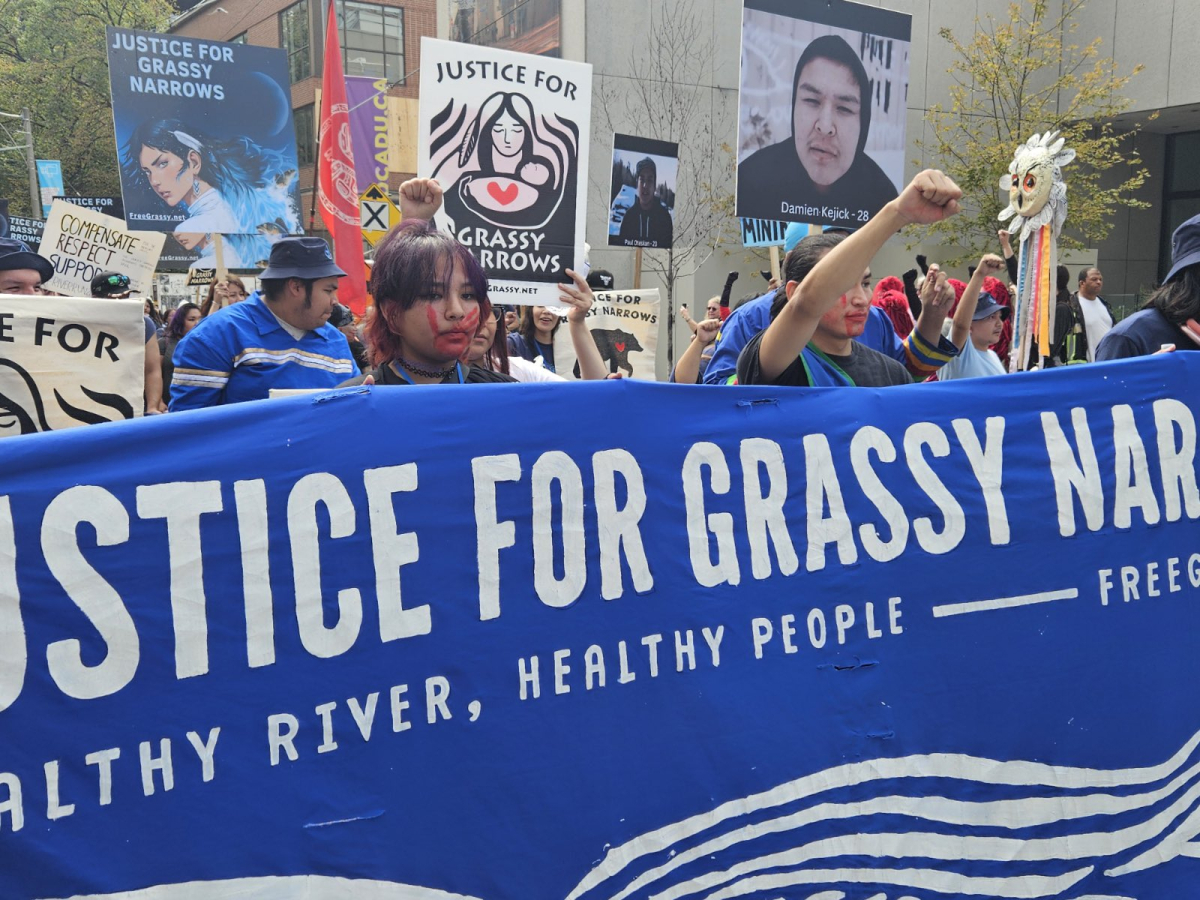Support strong Canadian climate journalism for 2025
Chrissy Isaacs's grandson knows the water is sick. He freaks out when he sees someone drinking from the tap. All he has known are big blue water jugs.
That’s why Isaac gets emotional today. She’s from Asubpeeschoseewagong Netum Anishinabek (Grassy Narrows First Nation), near the Manitoba and Ontario border, about 500 kilometres northwest of Thunder Bay. She has been fighting for environmental justice in her community since she was a youth. Today, she is a grandmother, “I'm still here fighting, you know, and it shouldn't be that way.”
For more than 50 years, Isaac’s community has faced a methylmercury poisoning crisis that has affected five generations of community members. On average, people here live only into their 50s or 60s, which is at least 20 years less than other Canadians.
“The rest of Canada gets to have the convenience of fresh, clean water, whereas we don't,” she said.
On Wednesday, Grassy leadership estimated that more than 5,000 people marched from Grange Park to Queen’s Park in Toronto to demand environmental justice for their community. Over 100 demonstrators were from faraway Grassy Narrows.
Isaac was part of a caravan of about 10 people who drove the 20-hour distance from their First Nation to Toronto, stopping at cities to spread awareness of the methylmercury poisoning crisis.
In a press release, demonstrators called on the federal and provincial governments to:
- compensate Grassy Narrows fairly;
- end industrial threats, including mining, logging and nuclear waste;
- support Grassy Narrows in restoring their way of life and wellness from the damage mercury has done;
- and to shut down the Dryden paper mill.
The paper mill, 150 km upstream of Grassy Narrows, is at the centre of longstanding and recent disputes between the First Nation, industry and the provincial and federal governments. In the 1960s and 1970s, one of Canada’s worst environmental disasters occurred when the plant's then-owners, Dryden Chemicals Ltd., dumped nine tonnes of mercury into the English-Wabigoon River.
The disaster has had cascading effects downstream for decades, with many from Grassy Narrows harvesting mercury-poisoned foods and water. About 90 per cent of Grassy Narrows' population is believed to exhibit symptoms of mercury poisoning, which leads to health problems such as tremors, insomnia, memory loss, neuromuscular effects, headaches and cognitive and motor dysfunction.
Recently, new research has shown sulfur and organic compound discharge from the Dryden paper mill, now owned by First Quality, has increased levels of methylmercury, which is even more toxic. The research has also found the river system shows no signs of recovery, and its fish maintain the highest mercury levels in the province.
Canada’s National Observer contacted First Quality for comment, but did not hear back by time of publication. The mill remains open at this time.
“They need to stop, you know, putting poison into our river system. They need to stop robbing us of our lives. They need to stop killing our people,” Isaac said of the paper mill.
The federal government has committed $200 million to constructing and maintaining a mercury care facility for methylmercury poisoning patients. The government and the First Nation are working on the facility's final details before construction begins. The government has also supported the community by providing around $5 million to upgrade their water treatment plant.
“Everyone deserves to live in a healthy and safe environment, including First Nations whose communities are too often located downwind, downstream, and next to polluting industrial facilities,” Indigenous Services Canada Minister Patty Hajdu said in a statement to Canada’s National Observer. “To the thousands marching today: I hear you and see you, and my commitment to you remains steadfast.”
However, it’s still unclear if Ontario will impose more stringent regulations on the mill. Earlier this year, Ontario imposed higher standards on a chemical plant in Sarnia that was the leading source of benzene poisoning at nearby Aamjiwnaang First Nation. Those regulations eventually led to the company’s shutdown of its plastics plant.
In a statement, Flavia Mussio, spokesperson for Ontario’s Indigenous Affairs and First Nation Economic Reconciliation, did not directly answer if the province is considering further regulations or a shutdown of the Dryden paper mill, saying only the provincial government respects Aboriginal treaty rights and is committed to meeting constitutional obligations to consult.
Grassy Narrows sued both the provincial and federal governments earlier this year. The First Nation claims long-standing neglect and the prioritization of corporate profits over the health of the community.
The lawsuit argues that the neglect and failed remediation attempts have broken the Treaty rights of the community. Grassy Narrows is a Treaty 3 Nation with section 35 Charter rights that guarantee protection to harvest in one’s traditional lands.
— with files from Abdul Matin Sarfraz
Matteo Cimellaro / Canada’s National Observer / Local Journalism Initiative







Comments